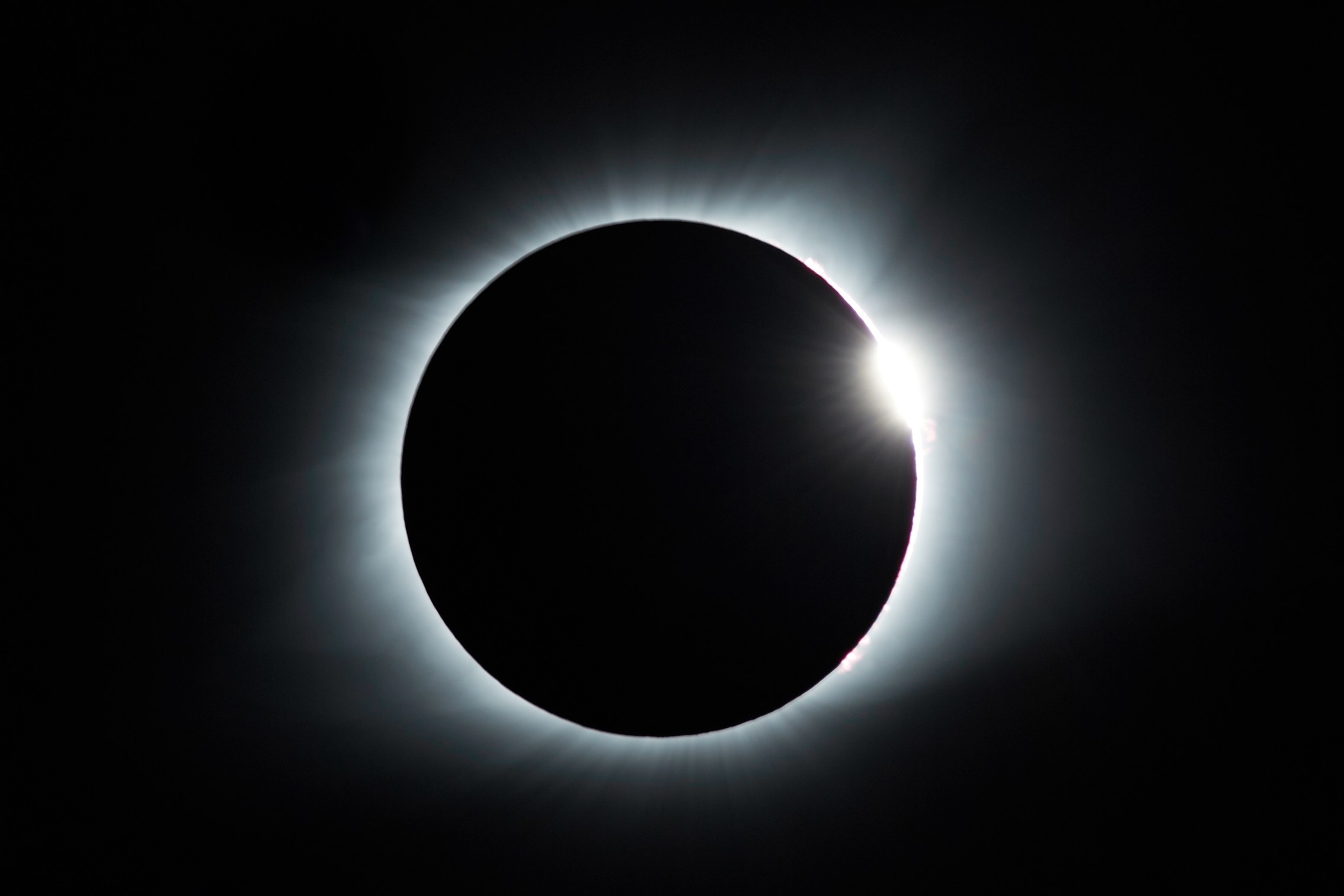On April 8th, 2024, one of the great natural phenomena visible on our wonderful blue planet—a total solar eclipse—will blaze a shadowy, mesmerizing scrawl across the southeastern U.S. While Asheville, North Carolina will lie outside the path of totality—that is, the zone wherein the Sun’s disc will be completely obscured for a few minutes by the Moon—it will still offer dazzling skywatching thanks to the partial solar eclipse that’ll take place overhead.
Let’s dig into the details of this relatively rare astronomical spectacle, which some have termed the Great North American Eclipse!
What is a Total Solar Eclipse & How Rare Is the Upcoming One?

Photo Credit by @shy_shutter on Instagram
A total solar eclipse occurs when the Moon—our pale rocky satellite—passes between the Earth and the Sun such that the apparent diameter of its shadowed form fully obscures the solar disc. The Sun may be some 400 times larger than the Moon, but the Moon happens to be some 400 times closer to Earth, which creates the opportunity for a lunar blot-out of our home star.
This can only happen, mind you, during a new Moon, which describes the lunar phase when the Moon’s orbit around the Earth puts it between our planet and the Sun. Now, a new Moon happens each month, but that doesn’t mean solar eclipses do. Because the Moon’s orbit around Earth is slightly tilted, only periodically do things line up perfectly for a new Moon to actually block the Sun as viewed from a spot on Earth’s surface.
The path of totality—the band of Earth’s surface falling within the Moon’s shadow during a solar eclipse—is quite narrow. Thus, any given solar eclipse is only viewable from a certain swath of Earth. The darkest part of the Moon’s shadow, the umbra, creates a circle only about 160 miles across; it’s within that circle that an Earthbound observer sees a total solar eclipse. But the penumbra, the lighter outer shadow of the Moon, casts a much broader path, giving folks within it a view of a partial solar eclipse.
Although solar eclipses aren’t infrequent when considered worldwide, any given spot on Earth only gets cast within a path of totality every several hundred years.
The relatively restricted region within which a solar eclipse can be seen contrasts with the situation during a lunar eclipse, which is when the Earth passes directly between the Moon and the Sun and the Moon is cast in our planet’s shadow. That phenomenon is viewable by anybody with a view of the Moon during the eclipse.
The distance between Earth and the Moon varies. When the Moon is too far away from our planet for it to completely cover the Sun—that is, its apparent diameter is smaller than the solar diameter. If Earth, Moon, and Sun line up for a solar eclipse at such a time, the result is an annular eclipse, when the shadowed Moon appears rimmed by the fiery ring (or annulus) of the Sun. An annular solar eclipse was visible over the U.S. recently, last October.
The Great North American Eclipse of April 2024

Photo Credit by @petrhoralek on Instagram
The last total solar eclipse viewable in North America took place on August 21, 2017: the so-called Great American Eclipse, the path of totality of which tracked from northwest to southeast across the Lower 48 states.
The upcoming April 8, 2024, solar eclipse, by contrast, will blaze a shadow from southwest to northeast from Mexico, across the eastern U.S., into southeastern Canada. It’ll hit Mexico’s Pacific coast at 11:17 AM local time, reach the U.S. via the Texas border at 1:27 PM, exit the States via Maine at 3:35 PM, and shunt off Newfoundland over the North Atlantic at 5:16 PM.
Along with Mexico and Canada, the following U.S. states will see at least part of the path of totality during the Great North American Eclipse: Texas, Oklahoma, Arkansas, Missouri, Illinois, Kentucky, Tennessee, Indiana, Michigan, Ohio, Pennsylvania, New York, Vermont, New Hampshire, and Maine.
All of the Lower 48, though, will experience a partial solar eclipse to one degree or another, with a “bite” taken out of the Sun by the dark Moon. This will be accordingly more impressive the closer one is to the path of totality, i.e. the trace of the umbra.
Viewing the Great North American Eclipse In & Around Asheville, N.C.

Photo Credit by @bryanminear on Instagram
Although the lively mountain town of Asheville, North Carolina won’t be falling within the umbra during the Great North American Eclipse, it’ll be pretty darn close, translating to a spectacular partial solar eclipse with roughly 85% of the Sun’s apparent diameter masked by the Moon.
The entire spectacle as viewed from Asheville will last about two-and-a-half hours: beginning at 1:51 PM on April 8th with “first contact” of the Moon’s silhouette hitting the Sun, reaching maximum coverage at 3:09 PM—when just a blazing crescent of the Sun will be visible against the black of the Moon—and ending at 4:24 PM.
What are some especially good locations from which to enjoy the partial solar eclipse from the Asheville area? For ultra-convenient front-row seats right in the city, we’d suggest Park Square Park downtown.
But if you’re willing to venture a little farther afield, you might take the world-famous Blue Ridge Parkway to, say, the Mount Pisgah Trailhead, or even head for the crown of the Great Smoky Mountains—Clingmans Dome—for an even more close-to-total solar eclipse experience. (The Great Smokies will offer a partial eclipse of closer to 90% obscuration.)
Safe Solar Eclipse Viewing

Photo Credit by @visitmarathontexas on Instagram
Hopefully, you remember the childhood lesson of never looking directly at the Sun! Serious eye damage, even outright blindness, can result. There is a brief window during a total solar eclipse when it’s safe to take a gander at the entirely blotted-out Sun. But otherwise—and for anybody, as in the Asheville area during the Great North American Eclipse, who’s outside the path of totality—you need to be viewing this celestial wonder through specialized eye protection.
Fortunately, specialized solar-viewing or eclipse glasses are easy to come by. Don’t make the mistake of assuming that sunglasses are a substitute—they most certainly are not!
Learn more about how to safely view a solar eclipse at this informative NASA page, and start planning your Great North American Eclipse experience out of Asheville, North Carolina!




